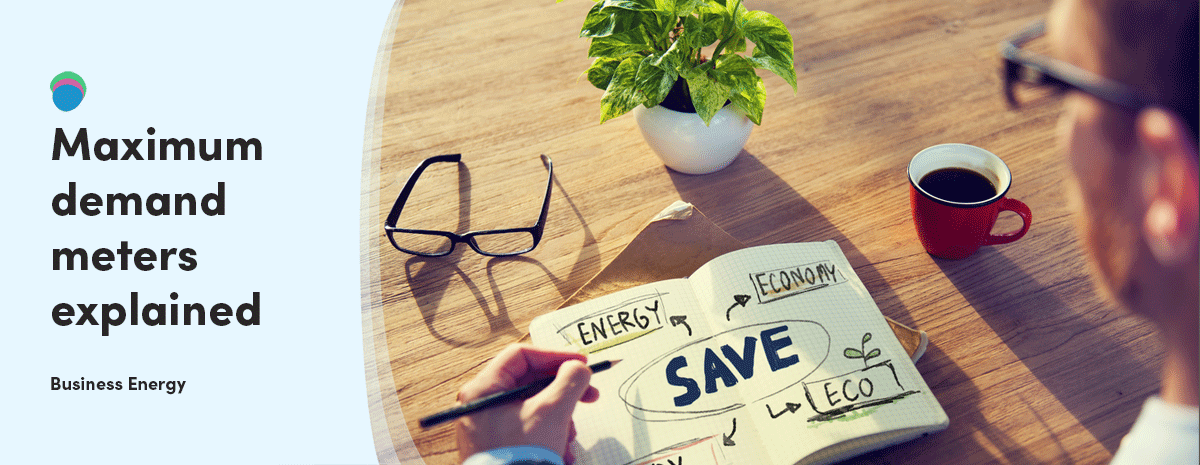Maximum demand meters explained
To match electricity supply with demand on a national scale, it involves considerable challenges. A whole range of systems must be put in place to accurately and effectively ensure this is carried out on a continuing basis.
Maximum demand charges are just one of the tools that DNOs (distribution network operators) make use of for large business electricity customers.
In this guide, we hope to provide an in-depth explanation as to what maximum demand is and how it can have an impact on business electricity prices. Additionally, we will also go over a few steps on how to reduce the amount you pay for electricity.

Article Contents
What is a maximum demand meter?
All maximum demand customers have been transitioned over to half hourly meters since April 2017. This will help to build a smarter electricity network within the UK that enables the balancing of power supply and demand in a far more efficient manner.
A change in the Balancing and Settlement Code, known as P272, meant that the switch to half hourly meters was applied. With half hourly settlements in place, a large number of businesses will not see a difference in their bills, others will pay a reduced amount. Nonetheless, some firms will be required to pay extra. Anyone with a current transformer (CT) meter may be expected to pay an increased amount for their commercial electricity. This is due to the DNO applying charges for the reserved network capacity.
Meters record usage data every 30 minutes for half hourly sites, instead of waiting for a meter reading to be taken. What this means is that providers can now charge based on actual usage rather than estimations, which in the past have been known to be unreliable.
How does a maximum demand meter work?
Maximum demand meters, especially for profile classes 05-08, have undergone significant changes in recent years. Since April 2017, due to the P272 amendment in the Balancing and Settlement Code, these meters transitioned to half-hourly meters. This strategic shift aimed to foster a smarter electricity network in the UK, ensuring a more balanced power supply and demand.
Unlike traditional meters that require manual readings, these half-hourly meters automatically record consumption data every 30 minutes. This automation allows suppliers to settle consumption based on real-time usage, promoting accuracy and efficiency in billing.
One crucial aspect to understand is the data processing mechanism. While the meter records the consumption, the actual maximum demand calculation doesn’t take place within the meter itself. Instead, the meter merely transmits the data for subsequent storage and in-depth analysis.
Demand charges explained
Beyond understanding the meter’s workings, it’s essential to grasp the financial implications. Demand charges, often termed as capacity or availability charges, are determined by your Distribution Network Operator (DNO). These charges hinge on your business’s pre-agreed capacity for your site, not on the actual energy consumed.
These charges are distinct from your consumption. They specifically relate to your maximum demand. In the UK, capacity charges can fluctuate between 70p to £1.50 per kVA, with the exact amount being influenced by your location.
For instance, a business site with an agreed capacity of 400 kVA, charged at £1 per kVA, would incur £400 monthly in capacity charges, irrespective of the actual power consumed. It underscores the importance for businesses to ensure their agreed capacity aligns with their genuine needs, preventing potential overpayments.
How can I reduce my costs as a maximum demand customer?
Reducing costs remains a top priority for businesses, especially when it comes to energy expenditure. As a maximum demand customer, understanding the intricacies of your business electricity bill is paramount.
This bill encompasses various charges, including the unit charge per kWh, capacity charge, and possibly the Maximum Import Capacity (MIC) charge. If your MIC charge seems disproportionately high, it’s essential to review your peak power demand and ensure it aligns with your actual consumption.
To potentially lower your MIC charges:
Review Your Maximum Demand: Analyse your energy consumption patterns to determine if your MIC charge aligns with your peak power demand. If discrepancies exist, consider adjusting your energy usage or discussing with your DNO.
Conduct a Business Energy Audit: An energy audit can provide insights into your energy consumption patterns, helping you identify areas for improvement. By enhancing energy efficiency, you can reduce overall energy consumption, leading to potential savings on your bills.
Switch Suppliers: Periodically reviewing and comparing energy deals can lead to significant savings. Utility Saving Expert’s online business energy comparison tools can assist in finding competitive offers tailored to your needs.
Consider Time of Use Tariffs: These tariffs offer reduced rates for electricity consumed outside peak hours. Depending on your business operations, this could lead to substantial savings. Familiarise yourself with different business energy tariffs, their benefits, drawbacks, and potential pitfalls to make an informed decision.
It’s also worth noting the increasing significance of non-commodity costs in energy bills. These costs, which can make up a significant portion of your bill, encompass various charges, including government policies, levies, network and distribution costs, balancing services, and more.
The UK government’s commitment to sustainable development and decarbonisation has led to an increase in these non-commodity components. While they may impact businesses in the short term, they play a pivotal role in supporting environmental initiatives and transitioning to a low-carbon economy.
As a maximum demand customer, proactive management of your energy consumption, understanding the various charges on your bill, and staying updated with market trends can lead to significant savings and optimised energy use.

Chris Richards
Chris is a personal finance specialist who founded Council Tax Advisors in 2012, assisting over 250,000 people with their Council Tax debt. Observing that many clients overpaid on utilities, he launched Utility Saving Expert in 2014, an energy price comparison site. In 2016, the platform expanded its services to include consumer and business insurance comparisons. Utility Saving Expert stands out with its commitment to social responsibility, donating 10% of net profits to fuel poverty charities, underscoring its dedication to both client value and community support.